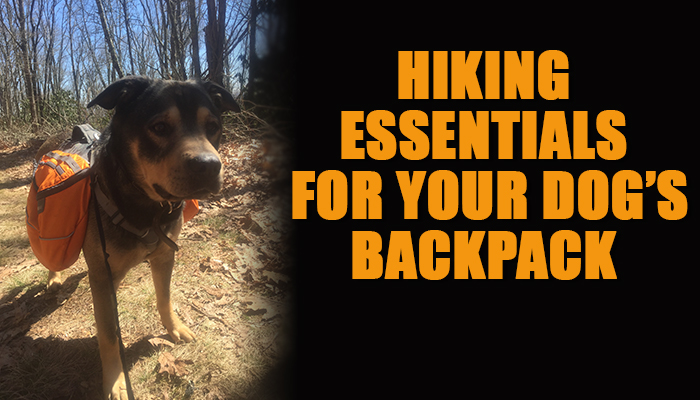
In a previous article, I talked about the Approach Pack by Ruffwear, which by the way is an excellent pack. Well, okay you have the pack or may have ordered one, so what goes in the pack.
1.) The obvious, of course, is food, water and collapsible bowls for the food and water. These will always be in the pack. Know the weight so you can stay at the 25 percent of body weight. Once you have the weight of the essentials, you can start weighing and adding other items up to the weight limit, so what other items should you have.
2.) Climbing rope will always come in handy because you can never have too much cordage. You may have to section off the rope or purchase the shortest length possible for your dogs pack to keep the weight down. Accidents happen and your dog may injure itself and may need to be lifted out of a crevice or ravine and you will need climbing rope to do this, not to mention you may need it yourself, and, of course, have quality mountain climbing grade carabiners in the pack.
3.) Next, you can add a first aid kit for your pet that addresses any current needs, such as maintenance medications and then items for any emergencies. Add an Israeli bandage to the kit because the design allows you to use it as a pressure bandage (without you applying pressure) over a wound in the event of an animal attack, or for an injury caused by a fall and so on.
4.) Noisemaker to warn bears, yes, to warn bears because they really do not want to come out and greet you. Therefore, you can hang a small bell on your dog’s pack so a bear can be alerted, and let’s hope they head off in another direction. Bears attack when surprised, when cubs are present or when you get between them and a food source or when you are considered a food source as is the case sometimes after a hard winter of hibernation.
5.) Redundancy in some cases is needed so toss in an extra magnesium stick, Ferro rod, and matches, and map in the event you lose your pack. Make sure all items are waterproofed. You can vacuum seal the items or use a quality baggie. Your dog may very well take a cooling dip in the nearest stream so expect the pack to get soaked so prepare according and make sure all items are protected.
6.) A handy item to carry is a lint roller, the ones with the sticky tape, and once used you peel off the used section and another is in place for the next use. The sticky paper is ideal for brushing your dog to grab up any ticks or other pests that have not embedded in the skin yet. Go over your own gear, clothing, and tent floor to remove any pests wandering about looking for a piece of skin to lunch on as well. The lint roller will also remove pollen spores that may cause allergy problems later at night. Rub your clothes and hair to remove the pollen.
7.) Leash, and harness/extra collar, more than one in fact, and the heavy nylon leashes are ideal because one can be used for emergency cordage if needed.
8.) Dog shoes, yes they have them and the neoprene ones, are very light and compact. They are good for traversing rough terrain to avoid cuts on your dog’s paws and for cold weather travel.
9.) Muzzle because you may need to muzzle your pet to stop barking if there is a predator lurking, or if you need to avoid humans for whatever reason, and to stop your pet from biting strangers.
10.) Your dog’s favorite brush and doggie bags for collecting waste if the area you are in requires you to collect it.
11.) Nail clippers for dogs in case they break a nail that needs trimming.
12.) Flea and tick collar or an extra one. You may be in an area that has ticks that are not prevalent at home so it is important that your dog is protected. Keep the flea and tick collars in their original packaging until ready to use.